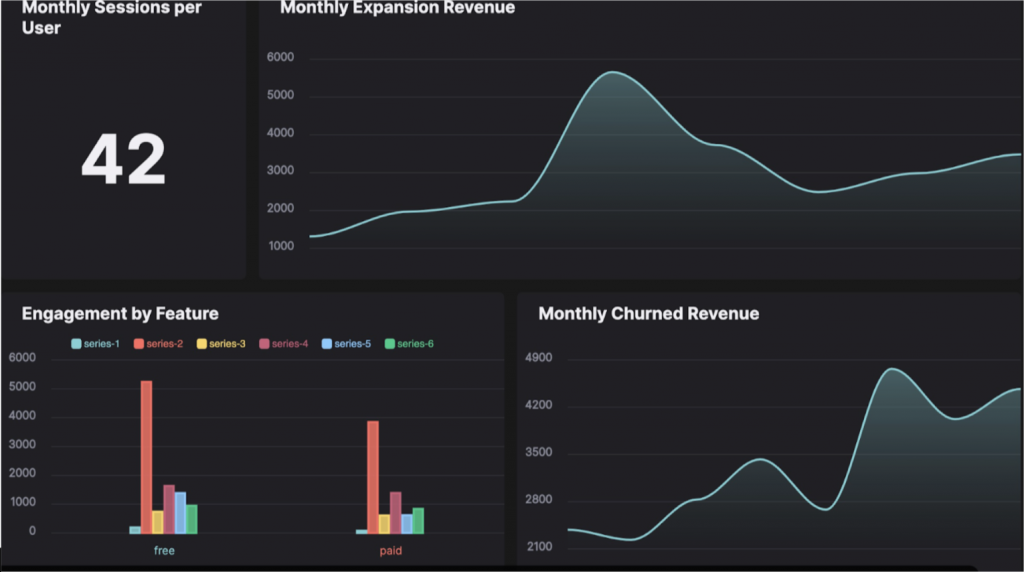What is Product Management? Beginner’s Guide
Product management is a dynamic field that significantly affects the future of companies. As 280 Group noted in its report, a successful product manager can increase the company’s profits by 34.2%.
A better understanding of product management can help you create more effective strategies. This article will help you learn the basics of successful product management, understand its importance and benefits, and find out about must-know product management KPIs.
What is product management?

Product management is an organizational function that guides each stage of a product’s life cycle, such as development, testing, pricing, and positioning, within the framework of users’ expectations. In other words, product management is responsible for correctly managing each phase to create the product that resonates the most with users.
One of the essential key factors in product management is user orientation. In today’s dynamic business environment, there is a need more than ever to understand the user closely and to create unique solutions for them. That is where product management comes into play.
Product management encompasses all stages from ideation of the product until the launch and beyond. With extensive market research, effective product management enables the creation of the ideal user-oriented product.
What does product management entail?
Product management is a discipline that requires focus and expertise on the emergence of the product and each subsequent stage. However, the main focuses of product management are:
Product management is a discipline that requires focus and expertise on the emergence of the product and each subsequent stage. The main focuses of product management are:
- Identifying opportunities and conducting research: Product management is primarily responsible for identifying opportunities in the market and executing strategies when introducing a new product or improving an existing product. Therefore, product managers must be aware of current trends and the expectations of their users. Besides that, they need to have a deep understanding of the market. Researching the market, users, and competitors is necessary for gaining expertise in this field.
- Developing product vision and strategy: In product management, it is necessary to define a product’s long-term mission and draw a clear and realistic roadmap to reach the desired point. Therefore, drawing a vision and long-term strategic plan for the product using industry knowledge learned is another critical area of product management.
- Communicating plans: Another responsibility of product managers is to clarify the vision for the product team and other key stakeholders in the organization, such as managers and investors, and share the stages of this plan with them. There must always be communication between cross-functional teams throughout the product development process. Seamless communication between teams is also particularly important when trying to reduce time to market as teams can work together to create an effective plan to launch the product as soon as possible.
- Acting on Feedback: The main focuses of product management don’t end after creating the product and introducing it to the market. After presenting the product to users, requesting and analyzing users’ feedback, identifying what works and what doesn’t is vital for optimizing future product strategies.

What are the benefits of product management?
To better understand the value that product management adds, it is necessary to mention the benefits of product management. Here are some of the advantages efficient product management offers:
#1 Reduced risk of product failure

Product management is not only limited to managing customer feedback and making necessary improvements after a product has been launched. In fact, product management also covers the stages before the creation of a product.
Therefore, it is also the responsibility of product managers to prepare a detailed business case, forecast, and scan the market before revealing the product. These preliminary stages of product development ensure that risks are identified and prevented promptly. In this way, product management mitigates the risk of failure of the product.
Preparing a detailed business plan before creating the product reveals internal data such as resources and constraints and external data such as market trends and competitive conditions. Thus, it enables companies to make better investment decisions and shape the product in a way that increases the chance of product adoption and minimizes risks.
#2 Clear definitions of expectations
Product management creates clear expectations for each stage in the product funnel. This way, it builds a system in which each step informs the other. This system is valuable and necessary because it allows everyone involved in creating and improving a product to work in harmony. This way, it ensures that the process is carried out without any disconnection between the teams and with minimum disruption.
#3 Aligned market needs
Product managers study and analyze the market. If necessary, they differentiate the product according to the market. In this way, they ensure that the final product will meet the users’ expectations and offer value.
Product management vs. project management: What’s the difference?
Project management and product management are complementary but different fields. Product managers are responsible for managing the team that creates the product that will meet users’ needs and increase profitability. It is an overarching role that connects different departments. On the other hand, project managers are responsible for getting things done during the product’s emergence process. They ensure the entire plan is executed without a hitch, from scheduling work to sourcing and managing the budget.
How important is analytics in product management?
Product management is a very data-intensive and analytics-driven discipline. Knowing the right metrics and tools is essential for efficient product management and increasing your company’s profitability. Monitoring all production processes and product-user relationships with dashboards will maximize your chances of success.
Here, it’s important to understand that product management also covers both product adoption, which deals with converting users who try your product into regular users, and feature adoption, which examines how many features of your product resonate with your target audience. Hence, you need to ensure that you have the right tools in your arsenal to not only track but compare historical data and use your findings to make informed decisions.

Tools like Hockeystack allow you to create detailed product dashboards and give you a more detailed view of your product management and a better plan for future actions. Thanks to Hockeystack’s multiple built-in integrations, you can manage all your data from a single platform to get more meaningful insights into your product.
Product management stages
The product management process may vary according to the company structure, product features, and product life cycles among several other things. However, the essence of product management lies in a few essential stages that make up the entire process.
Let’s take a look at these stages.
Defining the problem

Every product management process starts with identifying a problem your target audience suffers from. When you determine how to turn this pain point into a solution, you have taken the first step in creating the ideal product that will appeal to your high-value users.
Analyzing the opportunity
The ideation phase is perhaps the most important one in the entire product management lifecycle. When coming up with an idea for a product, you need to be certain that the idea you have in mind is not only one that solves an existing problem, but you also need to ensure that there’s enough of a market available for your product to be viable.
Before you design a new product, you need to answer some questions. These questions may look like:
- What is the total addressable market size?
- Can the problem you identified to be solved without buying a new product?
- Have other companies attempted to solve the problem at hand? Did they succeed in doing so?
Product management requires you to analyze the market and opportunities by finding answers to these questions and plenty of others to ensure that your efforts in subsequent steps won’t go to waste.
Researching potential solutions
At this stage, you have now identified a problem that needs to be solved. However, this does not mean that the first solution that comes to mind will be the best.
When determining the solution, you should thoroughly examine your users’ pain points and understand why they haven’t been able to solve them yet. Creating a wide range of possible solutions in this process of product management will increase your probability of launching the right product.
Building an MVP

After going through all the solutions and deciding on the most suitable one, you should identify the essential features of your product. This way, the product team can create a product version that your users can test.
This MVP (Minimum Viable Product), which you will have your users test and analyze their feedback, should contain only the most necessary features. That is because spending extra on a product that has not yet proven successful is unreasonable.
MVPs allow you to measure how the product works and how well it aligns with its value proposition and positioning. If, after testing the MVP, you decide the product will be successful, you can move on to the next stage in the product lifecycle.
Creating a strategy
If everything went well in the MVP process, it’s time to plan a strategy for the actual product you’ll be launching. Building on a strategy to develop the product, bring it to market, and align with desired results will increase your success by relying on MVP feedback and some KPIs.
Product improvement
Product management does not end with the product’s launch. You should develop your product according to the feedback and interest of your users and keep it updated at all times. In this way, your product evolves according to the needs of your users and always remains user-oriented.
Product Management KPIs You Need to Know

In order to properly manage the product management process, you need to leverage some metrics and KPIs and make data-driven decisions. Here are some product management KPIs that will make your job easier:
- Contraction Rate: It shows the decrease in the income you earn from your current users (due to reasons like your users downgrading or canceling their purchases).
- Churn Rate: This KPI represents the rate of users that cancel their subscriptions or stop purchasing. Thus, the lower the churn rate is, the better.
- MRR/ARR: This metric expresses the rate of your monthly recurring revenue to your annual recurring revenue.
- Expansion Rate: Unlike the contraction rate, the expansion rate shows an increase in the MRR due to upgrades, up-sells, and cross-sells.
- Stickiness: Stickiness is a rate for measuring how often your users use your product actively. It’s calculated by dividing your daily active users by your monthly active users.
- Retention Rate: The retention rate is the opposite of the churn rate. This metric shows how many users continue using your product or purchasing it after a certain period of time.
- Active Users: This metric shows how many users use your product actively during a certain predefined time period.
- Lifetime Value: This KPI shows the revenue your users generate for your company until they stop being your user.
Your company type, goals, volume, and other factors affect what metrics you will need. That said, these metrics can be a little difficult to measure and leverage for decision-making without a powerful analytics platform.

With Hockeystack, you can use the countless product, marketing, and sales metrics to create customized dashboards of your choice. The no-code, intuitive designer coupled with robust integrations allow you to liberate your product data and visualize it just the way you need to improve decision-making. Once you have all your data in one place, it makes it easier for you to understand how changes to your product management strategy will affect other processes within the company, helping you mitigate the risk of loss.
Conclusion
Owing to the dynamic nature of the SaaS industry, product managers need to have the right skills that will allow them to create, execute, and optimize product-based strategies. Product management is a complex profession that requires many qualifications such as using correct data, leadership, aptitude for teamwork, and the ability to analyze customer trends.
The importance of numerical data in product management is undeniable. Failure to analyze the data in detail leads to the inability to determine the appropriate strategies and the failure to do the correct planning for your company’s future. A tool like Hockeystack that can assist you in your progress by making it possible to track all the KPIs you need will bring unparalleled benefits in achieving your goals.
FAQ
Product management KPIs help you characterize your product performance quantitatively and qualitatively. Product management KPIs are important in measuring your success and determining your plan.
KPIs help product managers make better decisions, identify areas of improvement that they should focus on better, set goals in line with your company’s vision, and monitor your direction. In addition, KPIs are used by product managers to identify and minimize risk.
Product success refers to your product’s position and impacts in the market. The best way to evaluate product success is to leverage product and revenue metrics.



